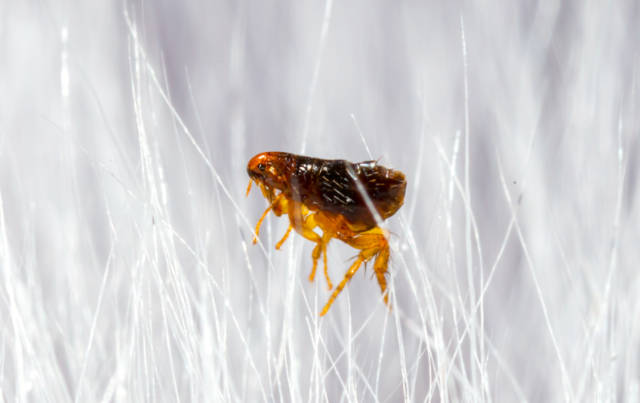Fleas are tiny bloodsucking pests that have been a problem for both people and animals for a long time. In this thorough guide, we’ll look into the fascinating world of fleas, learning about their biology, how they act, and the problems they cause in the modern world. So, buckle up, because we’re going on a trip to learn about these nasty bugs!
Flea Biology: Finding Out the Truth
Fleas are interesting creatures that are in the order Siphonaptera. Their mouth parts have changed so that they can feed on the blood of mammals and birds. Even though they are very small, they can jump amazing lengths of up to 18 centimetres high and 33 centimetres long on their long back legs. If only people could jump like fleas, we’d be able to hit 160-foot heights and travel 295-foot distances.
Fleas are interesting not just because they can jump well, but also because they are so good at staying alive. Even squeezing a flea between your fingers won’t kill them because their bodies are strong and can take a lot of pressure. Female fleas can lay up to 5,000 eggs in their lifetime, but only 5% of a population are adults. Instead, 10% are pupae, 35% are larvae, and 50% are eggs. This is a recipe for an infestation disaster!
A flea’s story about its life cycle and habits
A flea’s life is a cycle that includes four stages: eggs, larvae, pupae, and adults. Fleas usually lay their eggs on their hosts, where they can stay for a few days or weeks until they hatch into hungry larvae. These tiny worms eat mostly organic matter, especially flea poop. That’s an odd thing to eat, don’t you think?
Once the larvae have eaten enough, they change into pupae and wrap themselves in a net to protect themselves. They can sleep in this shell for up to a year without food, which makes it hard to get rid of them. But don’t worry, because we’re here to tell you how professionals get rid of fleas!
Getting rid of fleas: a battle of wits
Now comes the real test: getting rid of the fleas. It’s not easy, because fleas can hide with the skill of seasoned escape artists. Because they are small and can fit in with their surroundings, they are hard to find, especially when they hide in the thick fur of pets. By the time you understand you have a flea problem, it may have already become a full-blown disaster.
Here’s where the magic of a professional pest control service comes in. We’ve changed how we get rid of pests to stay one step ahead, just like fleas do when times change. We make individualized treatment plans to get rid of fleas in your home by knowing how they act and how long their lives are.
In addition to insecticides, our careful checks make sure that we find even the most hidden flea eggs and pupae, which stops them from using sneaky ways to stay alive. Even though do-it-yourself ways may seem appealing, keep in mind that fleas tend to become immune to certain chemicals over time, making your efforts useless.
The Flea Dilemma: How to Get Rid of Them
The first step in getting rid of these hardy bloodsuckers is to learn about them. Even the smartest pet owners and office workers have trouble with fleas because their biology and life cycles are hard to understand. If you have a flea problem, your best chance of getting rid of them is to hire a professional pest control service.
So, learn as much as you can, keep an eye out, and remember that we’re here to help you with any flea problem. With the help of this complete guide, you can say goodbye to these tiny but powerful enemies. Together, we’ll get rid of the fleas and make your home and office peaceful again.



